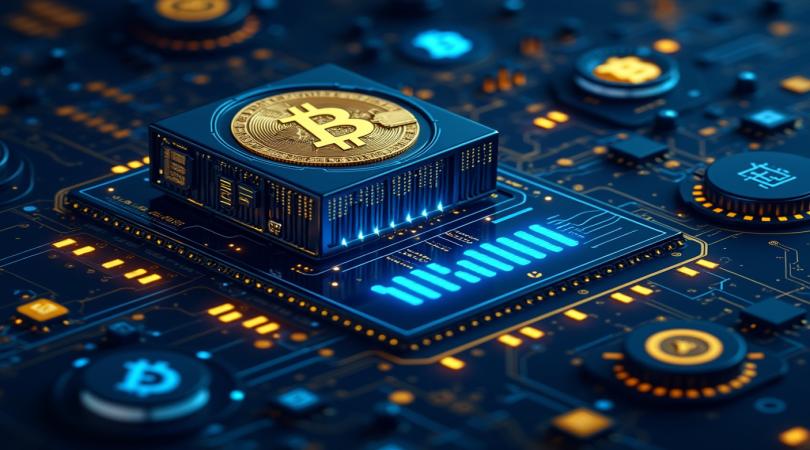

 20 Aug
20 Aug
Cryptocurrency mining has gained significant attention as the digital currency landscape continues to expand. But what exactly is cryptocurrency mining, how does it work, and why is it essential to the cryptocurrency ecosystem? In this comprehensive guide, we'll explore the intricacies of mining, the technologies involved, the benefits and challenges, and the future of this fascinating field.
Before delving into mining, it’s crucial to understand what cryptocurrency is. Cryptocurrency is a form of digital or virtual currency that uses cryptography for security. Unlike traditional currencies issued by governments (fiat currencies), cryptocurrencies operate on decentralized networks based on blockchain technology.
Cryptocurrency mining is the process by which transactions are verified and added to the public ledger (blockchain) and the means through which new coins are created. Miners use powerful computers to solve complex mathematical problems that validate transactions. When a miner successfully solves a problem, they add a new block to the blockchain and are rewarded with a certain amount of cryptocurrency.
Transaction Verification: When a user sends cryptocurrency, that transaction is broadcasted to the network. Miners collect these transactions and bundle them into a block.
Solving the Cryptographic Puzzle: Each block contains a cryptographic hash of the previous block, a timestamp, and transaction data. Miners must solve a complex mathematical problem (often referred to as a proof-of-work) to find a hash that meets specific criteria (e.g., starts with a certain number of zeros).
Adding to the Blockchain: Once a miner successfully solves the puzzle, the new block is added to the blockchain, and the transactions it contains are confirmed.
Reward Distribution: The miner who successfully added the block is rewarded with newly minted cryptocurrency and transaction fees from the transactions included in that block.
Proof of Work (PoW): The most common method, used by Bitcoin and many other cryptocurrencies. Miners compete to solve the mathematical puzzle, and the first one to succeed gets to add the block to the blockchain.
Proof of Stake (PoS): An alternative to PoW, where validators (not miners) are chosen to create new blocks based on the number of coins they hold and are willing to "stake" as collateral. This method is considered more energy-efficient.
Other Consensus Mechanisms: Variants like Delegated Proof of Stake (DPoS), Proof of Authority (PoA), and others are also used by different cryptocurrencies, each with unique characteristics and benefits.
Mining requires specialized hardware to perform the computations needed for solving cryptographic puzzles.
ASIC Miners: Application-Specific Integrated Circuits (ASICs) are specialized devices designed for mining specific cryptocurrencies, such as Bitcoin. They are highly efficient but can be expensive.
GPUs: Graphics Processing Units (GPUs) are more versatile than ASICs and can mine various cryptocurrencies. They are commonly used in Ethereum mining but are less efficient than ASICs for Bitcoin.
Mining Rigs: A mining rig consists of multiple GPUs or ASICs working together to increase hashing power and improve chances of solving the puzzle.
Mining also requires software that connects the mining hardware to the blockchain network. Some popular mining software includes CGMiner, BFGMiner, and EasyMiner. These programs manage the mining process and monitor the performance of the hardware.
Earning Cryptocurrency: Miners can earn substantial rewards for their efforts, especially if they contribute to a popular cryptocurrency like Bitcoin.
Supporting the Network: By validating transactions and adding them to the blockchain, miners play a crucial role in maintaining the integrity and security of the cryptocurrency network.
Participating in Decentralization: Mining helps decentralize the control of the cryptocurrency, which enhances its security and resilience against attacks.
High Energy Consumption: Mining, especially PoW mining, requires significant computational power, leading to high electricity costs. This has raised concerns about the environmental impact of cryptocurrency mining.
Hardware Costs: The initial investment in mining hardware can be substantial, and as mining difficulty increases, it may require frequent upgrades.
Mining Difficulty: The more miners that join the network, the harder it becomes to solve the cryptographic puzzles. This can lead to decreased profitability for individual miners.
Market Volatility: Cryptocurrency prices can be highly volatile, impacting the profitability of mining. If the price of the mined currency drops significantly, it may not be worth the operational costs.
As the cryptocurrency landscape evolves, mining technology is also advancing. New consensus mechanisms like Proof of Stake are gaining popularity due to their lower energy requirements. This shift may lead to a more sustainable mining ecosystem.
As governments worldwide continue to grapple with cryptocurrency regulations, mining operations may face increased scrutiny. Compliance with local laws and regulations will become essential for miners.
The cryptocurrency community is increasingly aware of the environmental impact of mining. Initiatives promoting sustainable mining practices, such as using renewable energy sources, are likely to gain traction in the coming years.
Cryptocurrency mining plays a vital role in the functioning of decentralized networks, providing transaction verification and security while enabling the creation of new coins. Despite its challenges, including high energy consumption and market volatility, mining remains an appealing avenue for those interested in the cryptocurrency space.
As technologies and regulatory landscapes evolve, the future of mining will undoubtedly change. Whether you are a seasoned miner or a curious newcomer, understanding the intricacies of cryptocurrency mining is essential for navigating this dynamic and rapidly evolving field. As with any investment, it’s crucial to conduct thorough research and approach mining with a clear understanding of the risks and rewards involved.
We may use cookies or any other tracking technologies when you visit our website, including any other media form, mobile website, or mobile application related or connected to help customize the Site and improve your experience. Learn more